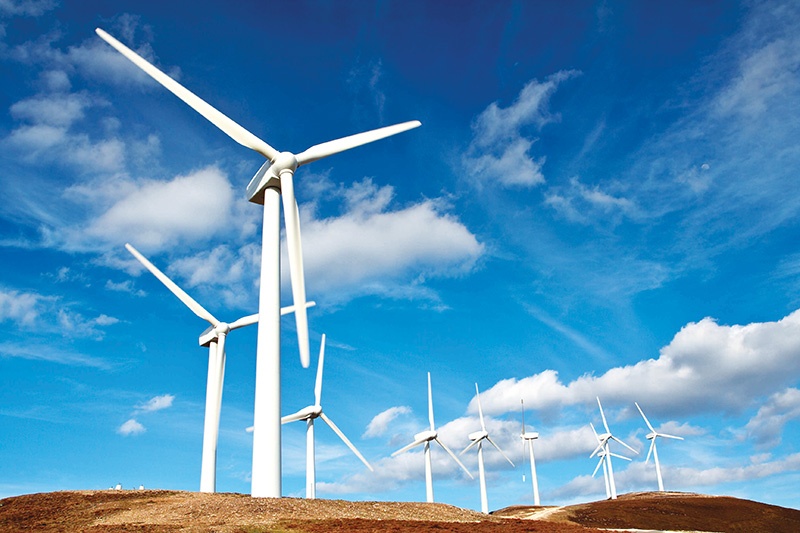Playing field reset for power ventures after FiT deadline
 |
| Some wind ventures that did not meet the FiT deadline may now be in a state of limbo, Photo: Shutterstock |
According to state-run Electricity of Vietnam (EVN), 84 out of 146 wind power projects that had signed power purchase and sale contracts with EVN met commercial operation date (COD) on or before October 31.
It was deemed an impressive result after the rush to invest in wind energy to take advantage of the government’s pricing incentives before transitioning to a competitive bidding auction scheme. The wind feed-in tariff (FiT) was introduced by the prime minister’s Decision No.39/2018/QD-TTg and set at 8.5 US cents per kWh for all onshore wind power projects achieving COD before November 1 this year.
According to an estimate from the Global Wind Energy Council, which had initially called for extending the FiT deadline, 4GW of wind projects translate to around $6.7 billion in investment that would significantly benefit local authorities and communities. This includes $6.51 billion in capital expenditures and an additional $151 million in operating expenditures per year across an average 25-year lifetime of projects.
Meanwhile, the remaining 62 projects with a total capacity of 3,479MW could not become operational before the FiT expired.
According to Giles Cooper, a partner at international law firm Allens, various scenarios may now arise regarding wind power projects that have project financing arrangements.
“A project may fail to reach financial close if it doesn’t achieve COD in time to enjoy the current FiT. Alternatively, different conditions may apply depending on the terms of the project’s loan agreement – the amount of a loan can vary according to the level of FiT obtainable by the borrower. In the worst-case scenario, pending extension of the FiTs or issuance of regulations on auction, lenders may walk away from the transaction,” Cooper explained.
“If financial close has been achieved, failure to reach a scheduled COD as stipulated in the power purchase agreement (PPA) could constitute an event of default under the terms of the loan agreement, triggering early repayment obligations and/or enforcement of loan security,” he added.
One representative of an overseas investor in Vietnam told VIR, “Despite challenges with transportation and lack of foreign experts due to the pandemic, our project finally got COD on time – but operating below capacity will cause wind power investors like us to suffer losses.”
The representative explained that in the process of implementing the connection agreement, based on the progress of power grid projects of which EVN is the investor and under the direction of the Ministry of Industry and Trade (MoIT) on allowing a conditional connection agreement, the parties agreed to include a clause requiring investors to reduce or stop the plant capacity when there is an overload of the grid.
This requirement is added to the PPA with EVN, pushing some investors into uncertainty.
In an EVN report to the MoIT in September, it noted that “the total capacity of renewable energy power sources that have been and are expected to be put into operation by the end of 2021 is very large, affecting the operation of the power system and the situation of local grid overload in some areas. Therefore, EVN must reduce the capacity of power sources”.
The People’s Committee of the south-central province of Ninh Thuan has already sent a written request to the MoIT to consider directing relevant units not to cut capacity, prioritising the maximum exploitation of solar power project capacity to offset the production and business costs for investors.
Vietnam aims to double the installed wind and solar power generation capacity to 31-38GW by 2030, as reaffirmed last week by MoIT Minister Nguyen Hong Dien at a roundtable on the sidelines of the COP26 climate conference in Scotland.
What the stars mean:
★ Poor ★ ★ Promising ★★★ Good ★★★★ Very good ★★★★★ Exceptional
Themes: COP26 - Together for Our Planet
Related Contents
Latest News
More News
- Honda launches electric two-wheeler, expands charging infrastructure (January 12, 2026 | 14:00)
- Vietnam striving to ease air pollution (January 09, 2026 | 14:41)
- Petrovietnam Gas awards first multi‑year LNG deal to Shell (January 09, 2026 | 14:38)
- Advancing the net-zero journey: Carlsberg Vietnam’s sustainability progress in 2025 (January 09, 2026 | 09:49)
- The green hydrogen and ammonia future for Vietnam (January 06, 2026 | 15:03)
- Green transition to close $20 billion annual investment gap (December 31, 2025 | 11:59)
- Australia contributing to Vietnam’s climate change responses (December 30, 2025 | 11:37)
- CME Solar strengthens position in Vietnamese renewables (December 30, 2025 | 11:21)
- Self-care signals shift towards sustainable healthcare (December 30, 2025 | 10:12)
- GreenYellow marks five years of clean energy growth in Vietnam (December 26, 2025 | 15:51)

 Tag:
Tag:



















 Mobile Version
Mobile Version